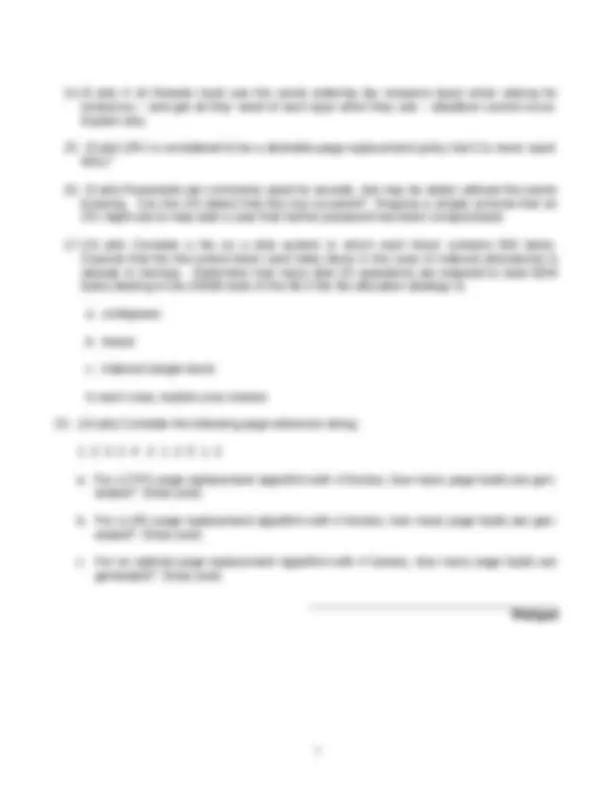



Study with the several resources on Docsity

Earn points by helping other students or get them with a premium plan


Prepare for your exams
Study with the several resources on Docsity

Earn points to download
Earn points by helping other students or get them with a premium plan
Community
Ask the community for help and clear up your study doubts
Discover the best universities in your country according to Docsity users
Free resources
Download our free guides on studying techniques, anxiety management strategies, and thesis advice from Docsity tutors
Final Material Type: Exam; Professor: Mukkamala; Class: OPERATING SYSTEMS; Subject: Computer Science; University: Old Dominion University; Term: Spring 2007;
Typology: Exams
1 / 3

This page cannot be seen from the preview
Don't miss anything!


If you desire, you may fax your exam to the CS office. The number is 757-683-4900. The exam is open book and open notes, but any work you turn in must be your own. By submitting this work to the instructor, you are pledging that you neither gave nor received assistance on this exam.